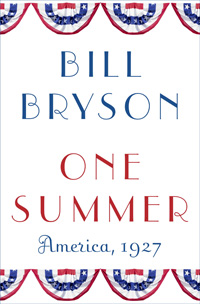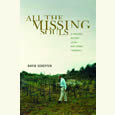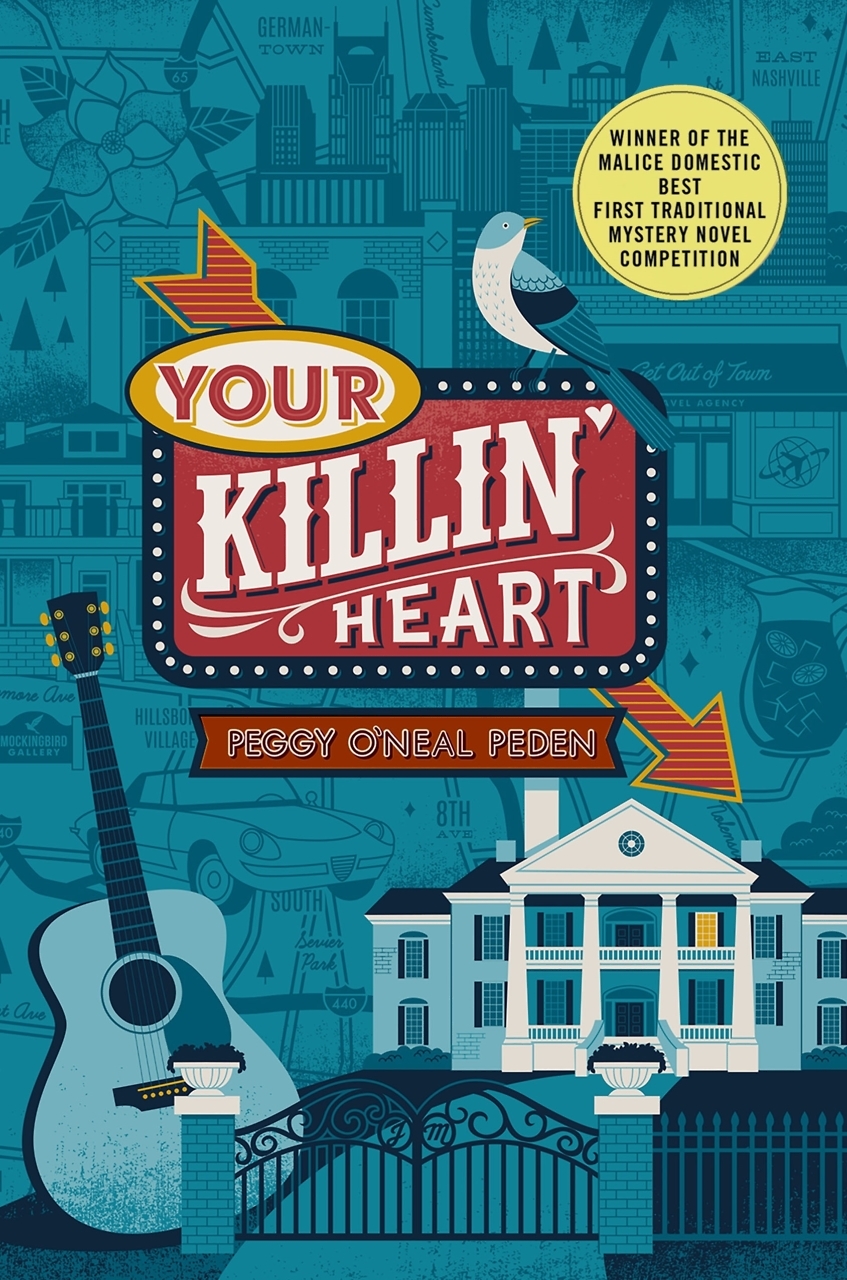Of Flight and Flappers
Bill Bryson’s One Summer: America, 1927 chronicles five eventful months of popular history
In addition to the hilarious travel writing for which he is best known, Bill Bryson has tackled an astonishing array of nonfiction topics: the British Royal Society’s impact on science, the history of the English language, the evolution of common domestic artifacts, and the aptly titled A Short History of Nearly Everything. In a twist, Bryson’s new book, One Summer: America, 1927, takes a deceptively narrow focus, describing events that occurred over a five-month period in Jazz Age America—but what a summer 1927 proved to be.
 That year Charles Lindbergh, the least likely contender of the dozen or so pilots vying to become the first to cross the Atlantic nonstop, made it to Paris. Babe Ruth marched steadily toward the single-season home-run record. Al Capone ran his organization as a stylish but absolute monarch, unaware that the Feds had discovered the key to his undoing. Hoping to cinch a shot at the presidency, an officious, self-aggrandizing bureaucrat named Herbert Hoover took over the fight to contain the flooding Mississippi, a natural disaster that proved to be the worst America had ever faced. Nicholas Sacco and Bartolomeo Vanzetti sat on death row, awaiting execution for murders they almost certainly did not commit, while supporters held rallies and hurled bombs. 1927 was also the year in which major news was for the first time broadcast on national radio networks in addition to being filmed for newsreels. And that’s just for starters.
That year Charles Lindbergh, the least likely contender of the dozen or so pilots vying to become the first to cross the Atlantic nonstop, made it to Paris. Babe Ruth marched steadily toward the single-season home-run record. Al Capone ran his organization as a stylish but absolute monarch, unaware that the Feds had discovered the key to his undoing. Hoping to cinch a shot at the presidency, an officious, self-aggrandizing bureaucrat named Herbert Hoover took over the fight to contain the flooding Mississippi, a natural disaster that proved to be the worst America had ever faced. Nicholas Sacco and Bartolomeo Vanzetti sat on death row, awaiting execution for murders they almost certainly did not commit, while supporters held rallies and hurled bombs. 1927 was also the year in which major news was for the first time broadcast on national radio networks in addition to being filmed for newsreels. And that’s just for starters.
Moving chronologically through the tumultuous events of the summer of 1927, the book follows a range of larger-than-life personalities, along with many quirky characters mostly forgotten by history, who become nonetheless memorable through Bryson’s descriptions. There’s Clarence Chamberlain, “the world’s most laid-back pilot,” who “if he couldn’t get to Europe sooner than Lindbergh, he could at least get there more strangely,” as Bryson puts it. Then there’s Alvin “Shipwreck” Kelly, who drew audiences in the thousands to watch him sit atop flagpoles for days on end. Equally remarkable was a young woman named Nan Britton, who published a bestselling tell-all book about her secret—and improbable—White House trysts with the recently deceased Warren G. Harding. And there are the railroad men Oris and Mantis Van Swaringen: “Of all the business Titans America produced in the 1910s and 1920s,”Bryson writes, “none were more extraordinary or are now more forgotten.”
As Bryson considers these few months of a long-forgotten year, recognizable and surprisingly contemporary elements of the American character emerge. Yet his historical acumen is almost beside the point. It is Bryson’s voice, his inimitable prose style, that gives readers a smile or two with every paragraph, that pulls them through all 528 pages of the summer of 1927. “Ruth tricked her unsuspecting hubby into signing a life insurance policy with a double-indemnity clause providing nearly $100,000 in the event that he met a violent end, and she now doggedly dedicated herself to making sure he did,” Bryson writes of a notorious murderer, for example.
 Beyond being a gifted researcher, finding the kinds of details that fuel one clever sentence after another, Bryson has an eye for coincidence, for moments when the key character of plotline A surprisingly shares a train car with the key character of plotline B, and then visits Paris in the same week as the key character in plotline C. He banks these odd intersections away, judiciously dropping one into every ten or twenty pages. The cumulative effect is to make the disparate, but generally interesting, events of 1927 seem like a single, intricately bound novel, a Dickensian web leading toward some final, brilliant climax.
Beyond being a gifted researcher, finding the kinds of details that fuel one clever sentence after another, Bryson has an eye for coincidence, for moments when the key character of plotline A surprisingly shares a train car with the key character of plotline B, and then visits Paris in the same week as the key character in plotline C. He banks these odd intersections away, judiciously dropping one into every ten or twenty pages. The cumulative effect is to make the disparate, but generally interesting, events of 1927 seem like a single, intricately bound novel, a Dickensian web leading toward some final, brilliant climax.
Of course, this is a true account of real life, and One Summer never reaches such a climax. The threads unwind, summer turns into fall, and the lives of the major characters can only be summarized in an epilogue that follows them to their various, often ignoble ends that happened decades apart. Lindbergh became a bitter recluse and Nazi sympathizer. Ruth played long past his prime, his drinking and profligate ways slowly undoing the superb athlete he had once been. Only in hindsight does their magical season shine: “Whatever else it was,” Bryson concludes, “it was one hell of a summer.”
Although there is no single point to a survey of the widely varied people and events joined by that stretch of time, the book itself gives one hell of a ride. Ray Bradbury’s Dandelion Wine, one of the finer novels of small-town American life in the early twentieth century, covers almost exactly the same span of months in 1928 as Bryson covers in the summer of 1927. Bradbury’s novel comprises loosely-connected stories that chronicle the coming-of-age of a twelve-year-old boy in an Illinois town, a place where rural innocence has begun to crumble before the advancing modern age. In its way, One Summer: America, 1927 provides a set of loosely-connected stories that do the same thing—but the coming-of-age belongs to America itself, as an entire nation lost its innocence.
[To learn more about One Summer: America, 1927, click here for Chapter 16‘s interview with Bill Bryson.]
Bill Bryson will discuss One Summer: America, 1927 at the twenty-fifth annual Southern Festival of Books, held in Nashville October 11-13, 2013. All festival events are free and open to the public.


